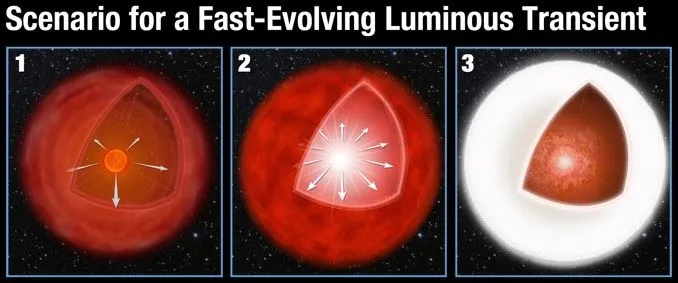
Once every second, somewhere across the known universe, a star explodes in a supernova blast, triggering a titanic, very rapid increase in brightness followed by a slow fading over several weeks. But a baffling, much more rapid rise and fall has been seen on rare occasions, an event known as a Fast-Evolving Luminous Transient, or FELT.
Because they are so short lived, only a few FELTs have been observed over the past decade and multiple theories have been advanced to explain them. But now the planet-hunting Kepler Space Telescope, equipped with a powerful camera built to record subtle changes in light intensity, caught a FELT in the act, capturing in detail the enormous rise in brightness and quick fade to black.